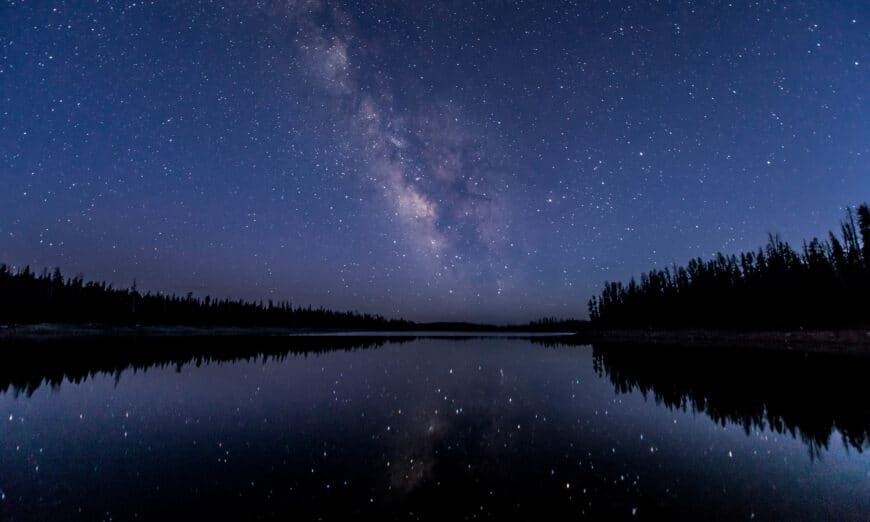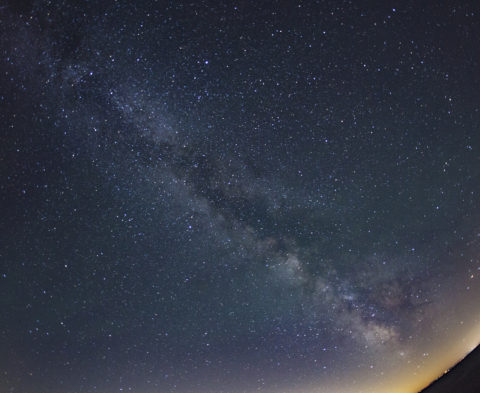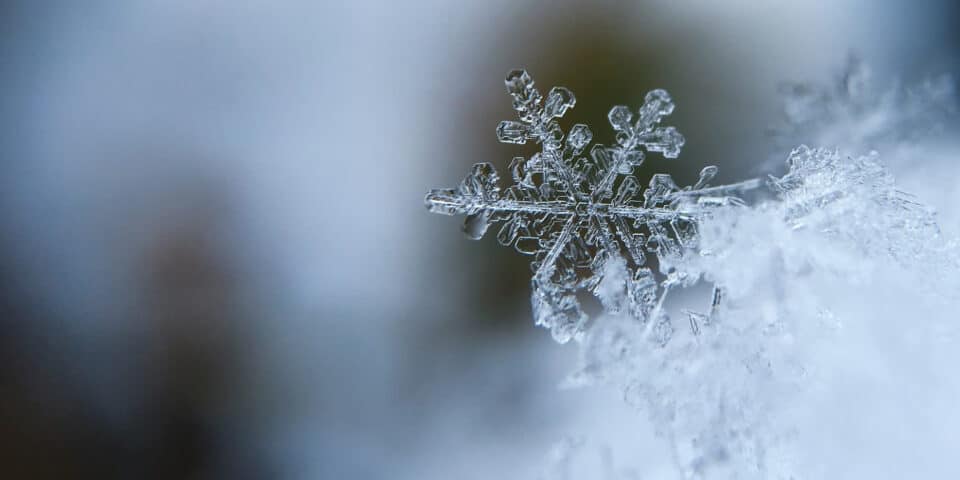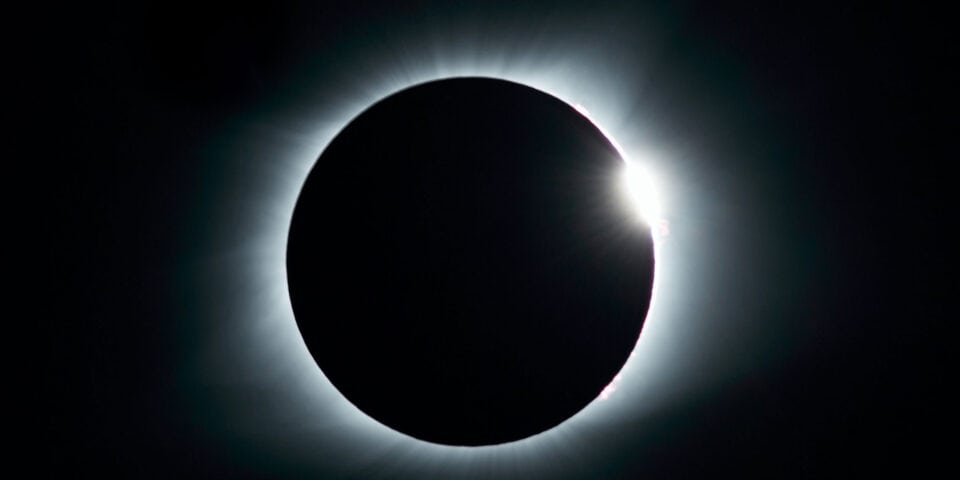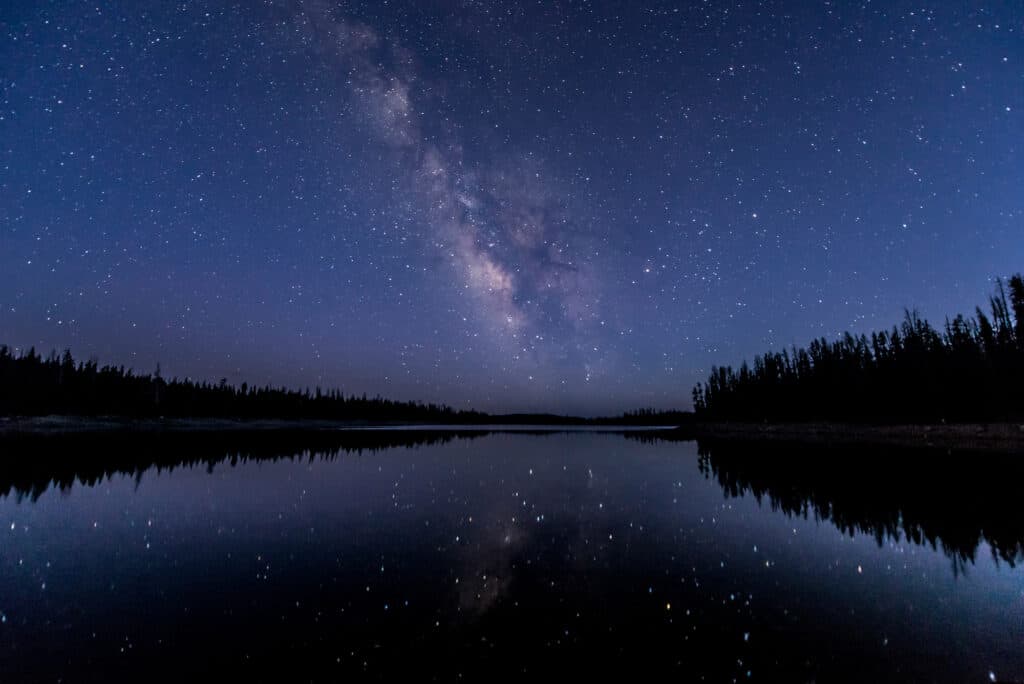
Astrophotography is an enchanting hobby that blends the infinite mysteries of the night sky with the art of photography. Whether you’re aiming to capture the Milky Way’s vast expanse or the Northern Lights, having the right equipment is paramount. In this comprehensive guide to astrophotography, we’ll explore an array of camera bodies and lenses suited for every level of astrophotography enthusiast. We’ll also discuss how to make the most of your backyard for celestial photography, find the perfect dark sky location, and how astrophotography can complement your outdoor adventures.
You can also explore and shop for recommended astrophotography equipment here!
Selecting the Right Camera for Astrophotography
High-End Camera Bodies
For those seeking unparalleled quality and performance in astrophotography, full-frame cameras are the gold standard. The Sony A7R IV offers a staggering 61MP sensor for incredible detail, while the Nikon D850, with its 45.7MP sensor, and the Canon EOS R5 with 45MP – all provide exceptional low-light capabilities and dynamic range. These cameras capture the night sky with breathtaking clarity and depth.
Mid-Level Camera Bodies
Astrophotographers looking for a balance between cost and performance will find excellent options in this category. The Canon EOS 6D Mark II is a favourite for its impressive ISO range and full-frame sensor, offering great quality without breaking the bank. The Sony Alpha A6400, while a crop sensor camera, boasts fast autofocus and excellent image quality, making it a solid choice for capturing the stars. The Nikon Z 5 FX-Series camera is a full-frame mirrorless camera that delivers detailed imagery, precision autofocus and the tools you need to be as creative as possible.
Entry-Level Camera Bodies
Starting your astrophotography journey doesn’t require a massive investment. The Nikon Z30 and Canon EOS Rebel T7 are both equipped with features that support night sky photography, such as good high ISO performance and the ability to use manual settings, providing a great foundation for beginners, and exceptional video recording settings – with the ability of making eye-popping nighttime videos in 4K.
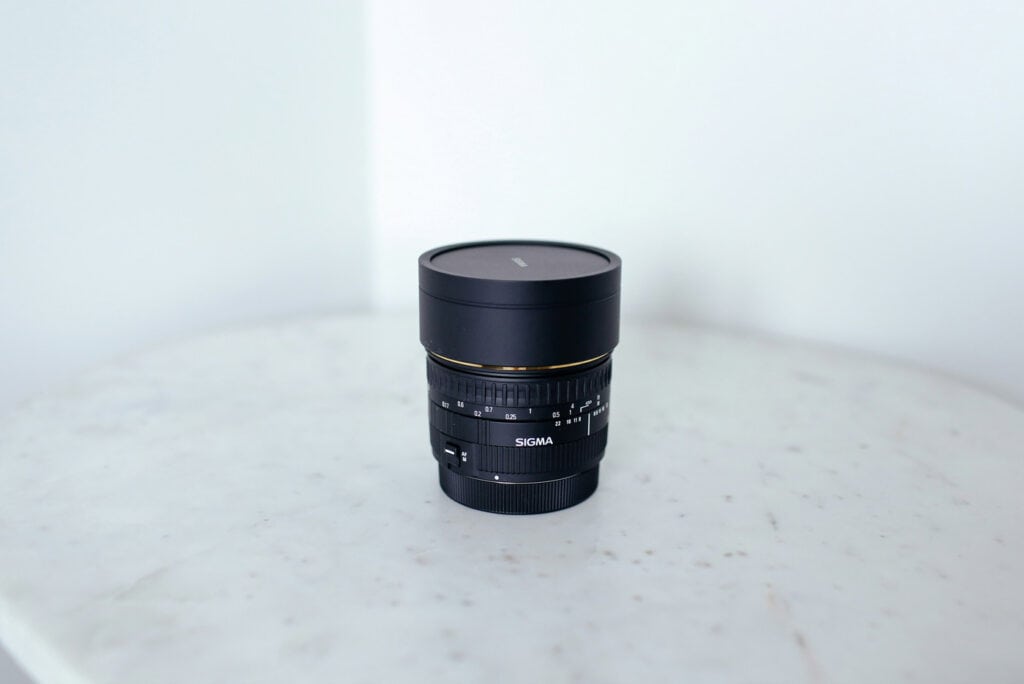
Selecting Camera Lenses for Astrophotography
The primary goal of a camera lens in astrophotography is to capture as much light as possible from celestial objects, often faint and at great distances, with minimal distortion and maximal clarity. This is achieved through lenses with wide apertures, which allow more light to enter the camera sensor over a shorter exposure time, reducing the effect of Earth’s rotation on the stars (star trails).
A good astrophotography lens also aims to minimize chromatic aberration and coma, ensuring that stars appear as sharp points across the entire image, rather than smears or blobs. Additionally, the lens must offer a focal length that suits the photographer’s subject, whether it’s wide-angle lenses for capturing expansive nightscapes or telephoto lenses for detailed images of the moon and planets.
Ultimately, the ideal lens for astrophotography combines these characteristics to help photographers vividly capture the beauty and complexity of the night sky, turning fleeting moments of cosmic spectacle into lasting images.
To truly find the right camera lens for shooting the stars, visit one of our Henry’s Retail Locations. Our experts can help identify the right lens for your camera setup, and your shooting style.
We recommend a Wide Angle and Telephoto lens to maximize your astrophotography options while out in the field. Whether you choose a prime lens or not comes down to personal preference and budget.
Wide Angle Lenses:
Wide-angle zoom lenses provide astrophotographers with the flexibility to capture vast expanses of the night sky while allowing for adjustments in framing and composition without needing to change lenses. These lenses are perfect for photographing sweeping landscapes beneath the stars or the ethereal arch of the Milky Way. With a range of focal lengths at their disposal, photographers can easily switch between capturing broad, scenic views and more focused, detailed celestial features. Wide-angle zooms also boast large apertures to maximize light intake in low-light conditions, crucial for revealing the intricate details and colours of astronomical phenomena. Their versatility and excellent low-light performance make wide-angle zoom lenses a favourite among astrophotographers aiming to explore the beauty of the night sky with creativity and depth.
The Sigma 14mm f/1.8 DG HSM Art is a stellar choice for wide-field astrophotography, offering a large aperture for capturing light.
Wide Angle Prime Lenses
Wide-angle prime lenses are a favorite among astrophotographers for their exceptional optical quality and ability to capture expansive celestial scenes with remarkable clarity. Featuring fixed focal lengths and large apertures, these lenses excel in low-light conditions, making them ideal for photographing the Milky Way, star trails, and night landscapes. The prime design ensures minimal lens aberration, resulting in sharper images with more accurate colors. Their simplicity and superior light-gathering capabilities allow photographers to fully immerse in the night sky’s beauty, capturing breathtaking views with precision and detail.
Telephoto Zoom Lenses:
A Telephoto Zoom Lens offer astrophotographers versatility and convenience, enabling them to frame celestial objects at various distances without changing lenses. While they may not match the prime lenses’ optical superiority, modern telephoto zooms provide excellent image quality across a range of focal lengths, from moderate to super-telephoto – and are more budget friendly. This adaptability is particularly useful in astrophotography for capturing everything from wide star fields to detailed lunar craters, allowing for creative composition and experimentation with different perspectives of the night sky. With advancements in lens technology, many telephoto zooms now feature improved aperture ranges and optical stabilization, making them a practical and effective choice for astronomers looking to explore the cosmos with flexibility.
Take a look at our “Capturing the Solar Eclipse – a Photographer’s Guide” blog to learn more about Telephoto Lenses for different camera bodies.
Telephoto Prime Lenses:
Telephoto prime lenses are essential for astrophotography, offering the ability to capture detailed images of celestial bodies with exceptional clarity. Their long focal lengths and wide apertures excel in bringing distant subjects closer, minimizing aberrations and ensuring sharp, distortion-free images. Ideal for photographing the moon, planets, or galaxies, these lenses combine superior optical quality with faster shutter speeds, reducing blurring from the Earth’s rotation. This makes telephoto primes invaluable for astrophotographers focused on the intricate details of the night sky.
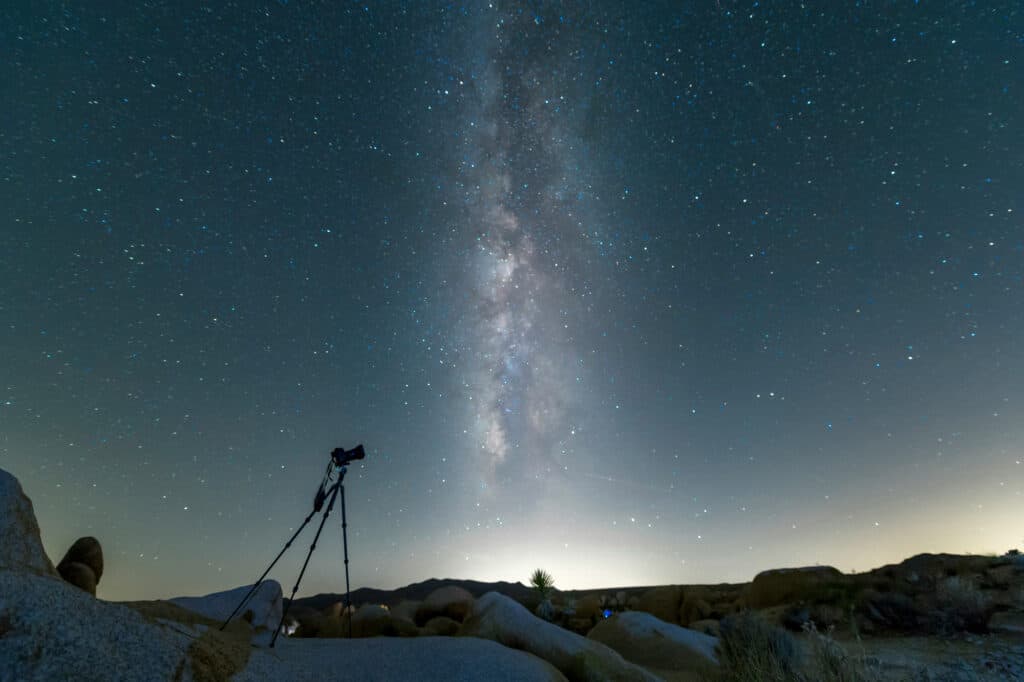
Camera Gear for Astrophotography
Beyond the camera and lens, successful astrophotography hinges on a few additional pieces of gear and considerations to ensure a comfortable, productive shooting session under the stars.
Tripod
A sturdy tripod is non-negotiable in astrophotography. It must be robust enough to support your camera and lens setup without wobbling, even in windy conditions. A tripod with adjustable legs and a reliable head offers flexibility for framing shots on uneven terrain, crucial for finding the perfect angle for celestial events.
Remote Shutter Release
A remote shutter release, whether wired or wireless, is essential for minimizing camera shake during long exposures. By allowing you to trigger the shutter without physically touching the camera, it helps in achieving sharp, clear images of the night sky.
Appropriate Clothing
Astrophotography often involves long hours outdoors at night, when temperatures can drop significantly. Layering is key; wear thermal base layers, a warm middle layer, and a windproof and waterproof outer layer. Don’t forget warm gloves that allow for dexterity, a hat, and insulated boots to keep you comfortable as you focus on the skies.
Extra Batteries and Memory Cards
Cold weather can drain batteries quickly, and long-exposure photography can fill up memory cards just as fast. Packing extra batteries and memory cards ensures you won’t miss out on capturing the perfect shot due to running out of power or storage space.
Headlamp with Red Light
A headlamp with a red-light setting is invaluable for navigating and adjusting your equipment in the dark while preserving your night vision. The red light is less likely to interfere with your ability to see the stars, making it easier to set up and shoot.
Warm Drinks and Snacks
Keeping warm drinks and snacks on hand can make the experience more enjoyable, especially during long nights. They not only keep you warm but also help maintain energy levels throughout your astrophotography adventure.
By combining the right camera gear with these essential accessories and personal items, you can enhance your astrophotography experience, ensuring not only great shots but also comfort and safety during your night under the stars.
Tips and Tricks for Successful Astrophotography
- Use Manual Mode: Full control over ISO, aperture, and shutter speed is essential.
- Focus Manually: Autofocus struggles in low light. Use live view mode to manually focus on a bright star.
- Shoot in RAW: This allows for greater post-processing flexibility.
- Experiment with Settings: Start with a wide aperture (f/2.8 or wider), a shutter speed of 20-30 seconds, and ISO between 1600 and 3200.
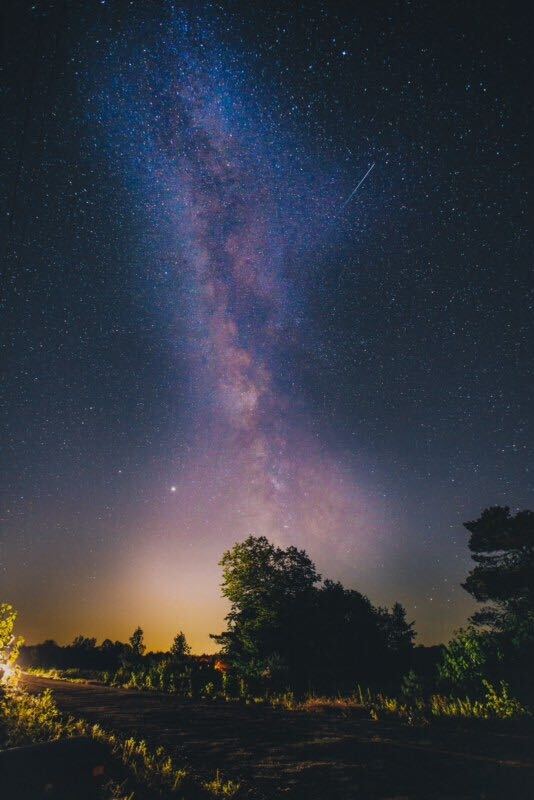
Maximizing Your Environment for Astrophotography
Shooting from Your Backyard
Not everyone can escape the city’s light pollution, but you can still capture stunning astrophotography from your backyard. Focus on brighter celestial objects like the moon, planets, or the Orion Nebula. Using a telescope or a long lens can also enhance your backyard astrophotography experience.
If possible, block out any source of local/reflective light using curtains, walls or anything at your disposal will help with light pollution and wash out.
Finding the Perfect Dark Spot
Venturing into rural areas away from city lights can unveil the true beauty of the night sky. Locations such as Kejimkujik National Park in Nova Scotia, Mont-Mégantic National Park in Quebec, Torrence Barrens Dark Sky Preserve in Ontario, Jasper National Park in Alberta or Mount Kobau Star Party Site near Osoyoos in British Columbia are renowned for their dark skies. Utilizing apps and maps that chart light pollution can help you find the best spots near you.
You can find great Dark Sky resources here:
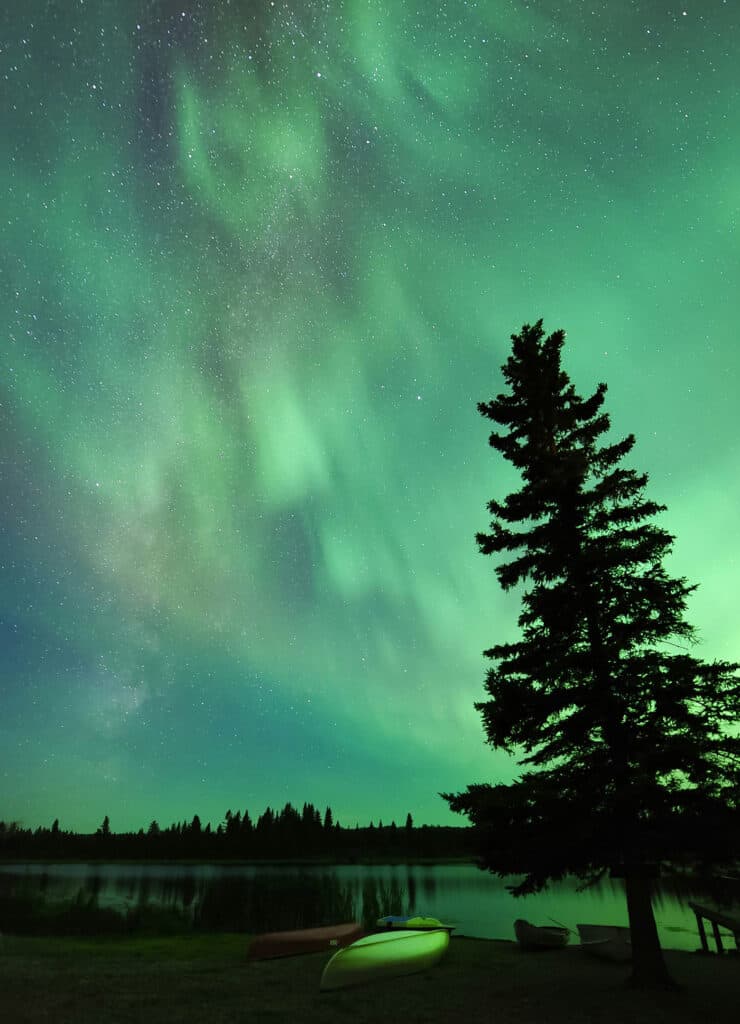
Integrating Astrophotography with Outdoor Hobbies
Astrophotography naturally complements various outdoor activities. Combining it with camping or a cottage trip not only provides a change of scenery but also the perfect dark sky conditions for night photography. Canoe tripping or hiking to remote locations can lead to unique and breathtaking astrophotography opportunities. This integration of hobbies not only enriches your outdoor experience but also expands your astrophotography portfolio with diverse and dynamic images.
Astrophotography is a rewarding pursuit that allows you to capture the beauty of the night sky. Whether you’re working with high-end gear or just starting with entry-level equipment, there’s a world of celestial wonders waiting to be photographed. By integrating astrophotography into your outdoor adventures, you can explore the universe while enjoying the beauty of our planet. Henry’s Cameras is here to support every step of your astrophotography journey, offering the gear and expertise you need to bring the cosmos to life.
Explore
